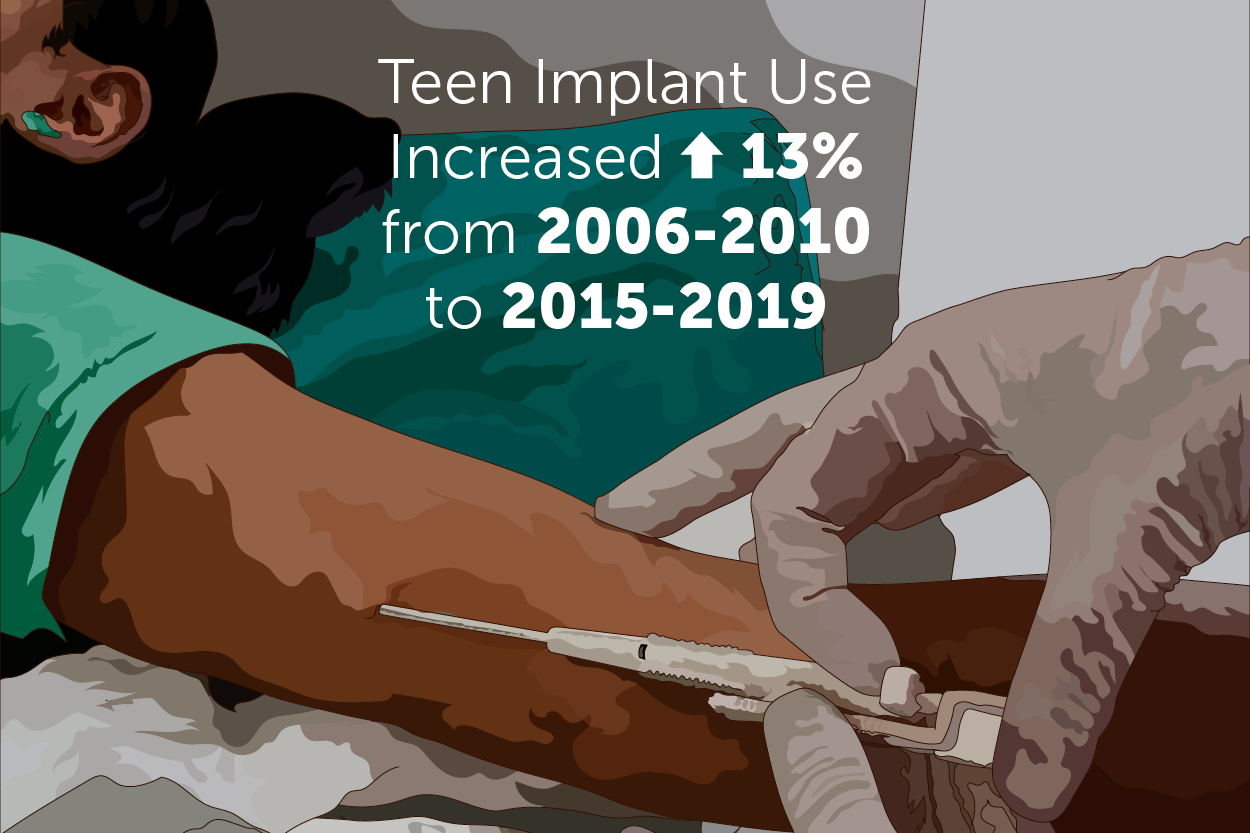Zero to Sixty: Implant Use on the Rise
If you had the implant on your birth control bingo card, you are a winner.
Teen use of the contraceptive implant increased from less than 1% between 2006 and 2010 2015 and 2019 to slightly more than 13% between 2015 and 2019, according to research from the CDC’s National Center for Health Statistics. Put another way, of the 16 methods available, the biggest change in contraceptive among teens over this time is the increase in the use of the implant.
The implant (Nexplanon and its generic versions) is a small rod, about the size of a matchstick, that is inserted under the skin in the upper arm. Once it’s inserted, it’s generally not visible in most cases. The implant is FDA-approved to prevent pregnancy for up to three years (with over 99% effectiveness), research shows it’s effective for up to five years.
What explains the dramatic increase? Experts point to several different factors. Dr Paula Castano, a professor at Columbia University notes in the New York Times that the insertion of long-lasting implant is less painful than the IUD and that “no pelvic exam is required.” Others note that the implant is a good choice for those who don’t want to remember to do anything—such as take a daily pill or remove and replace a patch or ring every month—for their birth control to work.
Although the growth in teen use of the implant is eye-popping, some perspective is important. The condom (95%), withdrawal (65%), and the pill (52%) are still, by far, the most used methods of contraception among teens. And data collected from 2015–2017 by the National Survey of Family Growth shows that 22% of females and 11% of males aged 15-24 who had sex for the first time before they were 20 didn’t use any method of birth control the first time they had sex.



